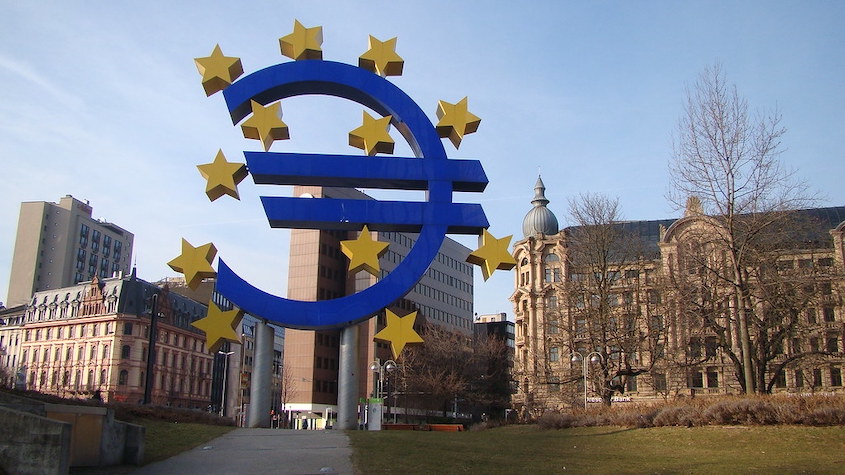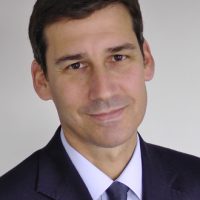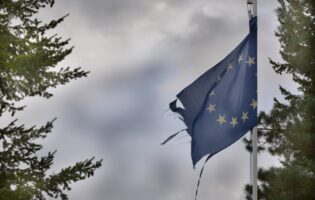
VasenkaPhotography via Flickr
Scholz’s Next Big Challenge: Reforming the EU’s Debt Rules

Alexander Privitera
AGI Non-Resident Senior Fellow
Alexander Privitera a Geoeconomics Non-Resident Senior Fellow at AGI. He is a columnist at BRINK news and professor at Marconi University. He was previously Senior Policy Advisor at the European Banking Federation and was the head of European affairs at Commerzbank AG. He focuses primarily on Germany’s European policies and their impact on relations between the United States and Europe. Previously, Mr. Privitera was the Washington-based correspondent for the leading German news channel, N24. As a journalist, over the past two decades he has been posted to Berlin, Bonn, Brussels, and Rome. Mr. Privitera was born in Rome, Italy, and holds a degree in Political Science (International Relations and Economics) from La Sapienza University in Rome.
The Ukraine crisis has caught the new German government largely by surprise and is providing an early test for the new coalition and its leader, Chancellor Olaf Scholz. His response so far offers early clues to his leadership style. It could also help in understanding how he will likely face different challenges. So far, we have learned the new Chancellor is reluctant to make big announcements. He tries to keep his cards close to his chest.
However, it is no secret that 2022 was going to be a difficult year for Germany and Europe under any circumstance. As the impact of Covid and its different variants recedes, the European Union will transition to a new normal. This will by no means mark a return to the status quo ante. Germany and the EU need to accelerate the transition towards a digital and greener economy while supporting growth.
The danger is that a mechanistic return to old rules could strangle the fragile recovery and risk the reopening of fault lines between so-called more “frugal” member states, mostly in the North of Europe, and more “spendthrift” countries
At the same time, they need to find a way back to common European debt rules. To allow governments to spend freely during the pandemic, the Stability and Growth Pact had been put on ice. However, the so-called escape clause contained in the pact will lapse at the end of 2022. If no decision is taken, old rules would need to be applied, causing EU governments to rein in public spending across the union, particularly in countries, such as Italy or Greece, that even before the crisis already had high public debt burdens. The danger is that a mechanistic return to old rules could strangle the fragile recovery and risk the reopening of fault lines between so-called more “frugal” member states, mostly in the North of Europe, and more “spendthrift” countries, usually identified as the South. So far, the common European recovery fund has been crucial in avoiding that splits reemerge during the most acute phase of the Covid emergency. However, for now, “Next Generation EU” remains a one-off measure and its impact will fade over time. Whether the recovery fund can become the first step towards a more permanent, at least partial, mutualization of public debt in the future also greatly depends on what kind of debt rules the EU will be able to enforce from 2023.
Scholz and the new coalition have no intention of reopening old fault lines—one of his first visits abroad was to Rome for talks with Italian prime minister Mario Draghi. Most member states agree that the old pact needs changes, but so far there is no European consensus yet, not even within the EU commission itself, on how to best achieve this. A public consultation launched by the EU commission late last year is serving as the basis for concrete proposals to be made by mid 2022.
Scholz has assembled an extremely capable team in the chancellery, headed by Joerg Kukies. Kukies was his main advisor at the finance ministry where he was pivotal in Scholz’ attempt to break the deadlock on finding ways to improve EU financial integration, notably by making progress towards the completion of the banking union. Scholz and Kukies showed a willingness to cross previous red lines, such as the traditional German opposition to a European common deposit insurance scheme. At the same time, they asked partners to overcome some red lines of their own. Negotiations on the Scholz proposal never really took off. However, the paper suggested a newfound ambition to improve mutual trust and agree to a grand bargain in which different positions are hatched out in a synchronized manner, rather than in a phased approach. It was a missed opportunity, undermined in part by strong residual mistrust, particularly in Italy, about the true intentions of the Merkel government.
Scholz seems willing to help forge a new European consensus. With Kukies at his side, he will rein in more orthodox, ordoliberal positions of his finance minister, Christian Lindner, should it become necessary. Perhaps it won’t. In a recent interview with the Italian daily la Repubblica, Lindner admitted that in order to invest in the digital and green future of Europe, some changes to the Stability Pact may become necessary. Tellingly, Italy and France are asking to carve out public investments in the green transition from the scope of the debt rules. However, they are also insisting on abandoning numeric debt targets, such as reducing public debt to 60 percent of GDP over time, and replacing them with country specific plans that are tailored to national needs. France and Italy argue that this would improve member states’ ownership of the debt reduction path. It would help to avoid the constant finger pointing towards Brussels and weaken anti-EU populist forces. While there is a logic to this argument, it is hard to imagine that Scholz would agree to completely abandon common numeric targets and replace them with what critics would no doubt consider arbitrary, country specific ones.
Alternatively, the German head of the European Stability Mechanism, Klaus Regling, has proposed to raise the debt limit from 60 to 100 percent. However, the weakness of his proposal seems to be that it rests entirely on the premise that interest rates will continue to remain very low, compared to levels of 30 years ago.
That brings me to one last consideration. While I expect Scholz to agree to a compromise eventually, much will indeed depend on the path of interest rates. For now, the European Central Bank has avoided responding to inflationary pressures prematurely. However, if inflation remains high and above target, the ECB could be forced to abandon its cautious step-by-step approach for exiting current stimulus measures.
Any rise in interest rates reduces the room for maneuver of national governments and makes the discussions on the future of the EU’s fiscal framework more complicated. Indeed, the paradox is that in the absence of a permanent, European or euro area specific fiscal tool—a permanent recovery fund, in other words, that absorbs a part of member states’ debt—market forces could reimpose more draconian debt reduction targets on individual countries. That would make any agreement between Scholz and his EU partners less effective, even if the new fiscal framework was simpler and more flexible.









